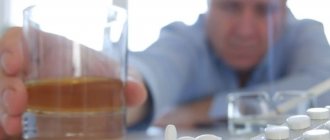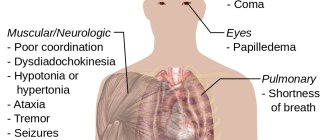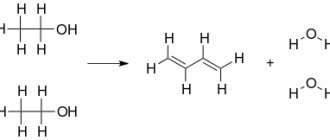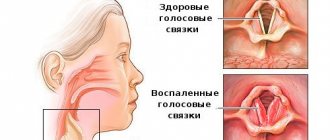March 22, 2011
The active ingredient in all alcoholic drinks is ethyl alcohol. You can use it as you wish, but you should not drink it.
The active ingredient in all alcoholic drinks is ethyl alcohol. Aka ethanol, aka C2H5OH. All the troubles of alcohol abusers are associated with it. However, it would be completely wrong to call ethanol evil - it is a sought-after and necessary substance, although not related to food products
. There are many ways to use it for its intended purpose, although ingesting it is not one of them. So how to use ethanol correctly?
Antiseptic
Medicine actively uses a variety of poisons in its arsenal. Ethanol – including. After all, bacteria die perfectly in ethyl alcohol. Therefore, before taking blood for analysis, the skin at the site of the future puncture is wiped with a cotton swab soaked in alcohol. Bacteria on the skin die, the alcohol evaporates - and here it is, a sterile finger or elbow is ready for blood collection. Alcohol is still sometimes used by surgeons on their hands before surgery, especially in the field. This means
that every time you order a cocktail, you are getting something that acts as a mixture of creosote and carbolic acid.
Our narcologists
Sipovich Vladislav Alekseevich
Psychiatrist, psychiatrist-narcologist, psychotherapist
Chief physician at the Multidisciplinary Medical Center “Harmony of Health”
Education: Medical State University named after. acad. I.P. Pavlova
Experience in providing drug treatment and psychotherapeutic assistance - 18 years, namely: home visits, outpatient and inpatient work
Tkachenko Andrey Vladimirovich, psychiatrist-narcologist
Education : in 2009 he graduated from the medical faculty of St. Petersburg State Pediatric Medical Academy - St. Petersburg State Pediatric Medical Academy, with a degree in general medicine. He completed his internship as a psychiatrist.
Work experience For the last few years he has been working as a visiting psychiatrist-narcologist. Specializes in withdrawal from binge drinking at home, through psychopharmacotherapeutic and psychotherapeutic intervention.
When should you drink?
There is one case when you need to drink ethanol for medical reasons. If a person drinks methyl alcohol, it is exposed to two enzymes in the body - alcohol dehydrogenase and aldehyde dehydrogenase. As a result, poisonous formaldehyde and formic acid are formed, which kill people. In this case, ethanol is the only antidote. It binds to these enzymes better than methyl alcohol, and methyl alcohol leaves the body without causing much harm to it. In the face of poisoning, the negative effects of ethanol are less dangerous than the almost guaranteed death from methyl alcohol. This means
that ethyl alcohol acts as an emergency rescue remedy, and not as a habitually consumed product.
Food alcohol, how to get it, who uses it?
Edible alcohol is produced from grain raw materials, potatoes, and sugar production. All foods rich in starch can create food grade ethanol. Raw alcohol undergoes a purification process. Afterwards, the fermentation process of the products starts and an alcohol-containing liquid – ethanol – is produced. By the way, liquid boils at a temperature of 73 degrees.
The main consumers of food alcohol are various alcohol plants and factories. These include distilleries and wineries. Any type of alcohol is prepared from food raw materials: vodka, wine, liqueur, cognac, whiskey. There is also a feature of the strength of the products. Pure alcohol contains 96% ethanol, from 31 to 65% ethanol is found in strong alcoholic drinks. The third position in terms of the amount of pure alcohol is occupied by products: wines, liqueurs, liqueurs - there from 15% to 30%. And the weakest alcoholic drinks are kvass and beer from 1.5 to 8%.
Things to remember
So, ethanol is a very necessary and useful substance for humanity.
Cars can drive on it, it helps doctors and chemists make our lives better and safer. Just don't drink it. Tags:
- Alcohol
4 comments • To leave a comment you must be an authorized user
- MADic I support ZNo4kу! It’s sad that this is exactly how the majority thinks... It’s sad that a person who doesn’t drink is out of the ordinary... It’s sad that people can’t imagine a party or holiday without alcohol... And even more people are killed by stupid people who shout: “expensive alcohol is not harmful!” or “barely harmful!” Who issued a diploma to these PSEUDO doctors who claim that small amounts are not harmful!? Alcohol is one thing, no matter how cheap or expensive! All from the same barrel and containing ethanol. I advise everyone to watch “Zhdanov V.G. Alcohol, tobacco, drugs." It would take me five fingers to count my non-drinking acquaintances, but I think these people are worthy of respect. And a person who drinks is unhappy, poor, has no will and freedom. PS doctors are not delusional, alcohol is harmful!
- ZNo4ka Comments from the outside look like teenagers in the toilet are measuring their dicks, sorry. Everyone realized that you are smart. As accustomed as we are to looking at the surface, people look at the root of “drinking is BAD.” The man wanted to convey this to you, and not to cause rapid brain movement and convulsive recall of chemistry lessons. And as for wine, it costs more than 10 euros... Well, damn it. Even if the whiskey costs a million, it won’t make alcohol water. Drinking is bad for you, friends. Let's live healthy.
- sgapich I’ll add one more case of medical use of ethyl alcohol. In case of pulmonary edema, the victim is given 10-15 minutes to breathe in ethyl alcohol vapor.
- DragonCat Solid seliger in the comments... Yes, a strange site.
 However, the articles also smack of it. Apparently, this is still a site for children of “young 20-year-old Russia”, which has nothing in common with my Motherland, Russia.
However, the articles also smack of it. Apparently, this is still a site for children of “young 20-year-old Russia”, which has nothing in common with my Motherland, Russia.
special instructions
When used externally, ethanol is partially absorbed through the skin and mucous membranes, which must be taken into account when using it in children, pregnant women and during breastfeeding. During the treatment period, care must be taken when driving vehicles and engaging in other potentially hazardous activities that require increased concentration and speed of psychomotor reactions. Do not use near open flames. Effect on the ability to drive vehicles and machinery The drug used as a solution for external use does not affect the ability to drive vehicles or machinery. With long-term use in large doses, absorption into the systemic bloodstream is possible, which can cause a decrease in psychomotor reactions, which should be taken into account when driving vehicles and engaging in potentially hazardous activities.
Ethyl or methyl?
- Ethanol (ethyl) is used in various sectors of life. It is found in most alcoholic beverages and is the safest for consumption. Often needed in medicine as a disinfectant. It is sold in pharmacies only by prescription. It is often used for preparing tinctures and even in soap making.
- Methanol (methyl) is a poison for humans, it affects the liver, kidneys, lungs and eyes in an accelerated manner, and depression of the nervous system occurs instantly. However, it can also be consumed in small doses, but you cannot buy it in pharmacies. It is used for production purposes only. It CANNOT be used!
In order to distinguish these alcohols from each other, the following experiments are carried out. Cut a slice of potato and place it in a glass of liquid for a couple of hours. The color of potatoes in ethanol does not change, but upon contact with methanol the potatoes turn pink.
For a faster test, use a hot copper wire dipped in an alcohol composition. Ethanol will not emit a strong, unpleasant odor, unlike methanol. Or, they set fire to cotton wool soaked in alcohol. Ethyl alcohol burns with a green flame, methyl alcohol has a blue flame.
Such precautions can save lives, because the maximum permissible dosages of these alcohols differ greatly due to the toxicity of methanol.
Ethanol as a medicine
Infusion for the treatment of sore throat, colds, bronchitis
Take in different proportions (about 100 g) of calendula, Kalanchoe and eucalyptus leaves. Pour the crushed plants with alcohol (the liquid should cover the plants). Leave for 72 hours in a dark place. Gargling will help get rid of diseases: dilute 1 part of the tincture with 10 parts of water. Gargle three times a day.
Choleretic alcohol infusion
Infuse barberry fruits for 14 days (mix 40 g of fresh berries with 40 g of dried ones). Take the medicine 3 times a day, 20-25 drops per 50 ml of water. The course of treatment is at least 2 weeks.
Vasoconstrictor tincture
Pour half a liter of alcohol into about 10 horse chestnuts. After 2 weeks of exposure, rub the alcohol tincture with massage movements into the areas of varicose vessels. To enhance the effect, take the same remedy orally - 30 drops 3 times a day. The effect of treatment will become noticeable within a month.
Scope of application
Medical alcohol has found its greatest use as an antiseptic. It has long been known that many drugs contain harmful substances and poisons that are neutralized under the influence of ethanol. To prevent infection, in hospitals the blood collection site is treated with alcohol, which evaporates after a short time, leaving a completely sterile area of skin. It is also widely used in pharmaceuticals, where it serves as the basis for the preparation of various medicinal tinctures. Can be used in other medical areas.
As a result, food and medical alcohol, despite similar manufacturing technology (and in some cases the same raw materials), have different degrees of purification and different areas of application.
There is a huge variety of alcohols used both in everyday life and in production. Most of them are dangerous to life and health. The most common ones taken as alcohol include ethanol, methanol and various medicinal alcohol solutions.
What types of alcohol poisoning are there and by what criteria are they differentiated?
Alcohol intake causes several different conditions that develop sequentially with increasing doses and are interconnected: • Alcohol intoxication, which initially causes an improvement in mood, euphoria, emotional arousal, and then a rapidly occurring depression of nervous activity in the form of slowness, lethargy, and drowsiness. There are several degrees of intoxication: mild, moderate, severe and extremely severe. • Alcohol intoxication develops with moderate and severe forms of intoxication and is associated to a greater extent with the accumulation of toxic breakdown products of ethanol in the body than with ethanol itself. • Alcohol poisoning is an extremely severe form of alcohol effects on the body, manifested by the onset of first superficial and then deep coma. In practice, such a gradation of the consequences of alcohol consumption is not generally accepted, and alcohol poisoning is understood as alcohol intoxication of varying degrees of severity. Intoxication of the body with alcohol, symptoms: • From the gastrointestinal tract - nausea, vomiting, diarrhea, abdominal pain resulting from irritation of the mucous membrane, malabsorption, insufficient or, conversely, increased production of pancreatic enzymes, general intoxication. • From the central nervous system, mental arousal is initially observed, manifested by euphoria, increased motor activity and sociability. With continued libation, it very soon gives way to such pathological phenomena as impaired attention and thermoregulation, incoordination, hypothermia, increased sweating, and dilated pupils. In severe cases, delusions, hallucinations and seizures develop. All these phenomena are explained by the toxic effect of alcohol and its processing products on neurons with disruption of their metabolism and hypoxia. • The cardiovascular system reacts with surges in blood pressure, tachycardia, arrhythmia, weakness, dizziness, as well as facial hyperemia, which, with increasing intoxication, turns into pallor or cyanosis. The cause of this reaction is dehydration due to increased urination, vomiting and/or diarrhea. To compensate for fluid losses in the vascular bed, compensatory mechanisms are activated to increase the oxygen supply to suffering organs. • Dysfunction of the respiratory system is manifested by noisy and frequent breathing, sometimes acute respiratory failure, developing as a result of damage to the respiratory center of the central nervous system, reflux of vomit into the trachea and bronchi, as well as their reflex spasm. Increased breathing is compensatory in nature to maintain acid-base balance. • The excretory system is also affected by alcohol. By reducing the level of release of antidiuretic hormone, ethanol increases urination and excretion of water and minerals (Ca, K, Mg) from the body. All this leads to water-electrolyte imbalance. In severe forms of alcohol poisoning, renal failure may occur with reduced diuresis or its complete absence (anuria) and irreversible changes in the nephrons (structural elements of the kidneys). • The liver, which is the main metabolic factory of the body, is most affected by alcohol, where all toxic waste products of the body, as well as toxins coming from outside, are neutralized. When damaged by alcohol, a person experiences pain in the right hypochondrium, nausea, and vomiting. With severe lesions, yellowness of the sclera, mucous membranes, skin and even the development of acute liver failure are observed. In case of extremely severe alcohol poisoning, the victim falls into a comatose state with loss of consciousness and lack of response to external irritation. Neither a scream nor physical impact can bring him to his senses. A blood alcohol concentration of 3‰ or more is critical for the development of coma. There are two phases of coma: • Superficial, accompanied by loss of consciousness, weakened sensitivity to pain, “floating” eyes, different pupil widths. The reaction to stimuli in the form of changes in facial expressions and weak protective reflexes is preserved to a small extent. At this stage of coma, there is hyperemia of the face and mucous membranes, tachycardia, shortness of breath and profuse salivation. • Deep coma is characterized by loss of sensitivity to pain, absence of tendon reflexes and muscle tone, hypothermia (below 36.2 degrees), pallor or cyanosis (blueness) of the face, decreased frequency (below 8 per minute) and depth of respiratory movements, hypotension (decreased blood pressure ), weak but frequent pulse (more than 120 beats/min). Sometimes there are convulsions.
In case of severe alcohol intoxication and falling into a coma, emergency medical care is required. While waiting for the brigade to arrive, it is very important to competently provide first aid for alcohol poisoning.
Ethanol and pregnancy
Folic acid, or vitamin B9, is one of the most important elements for pregnant women. The thing is that this vitamin promotes the correct development of the spinal cord of the embryo, and then throughout pregnancy affects the correct formation of the fetus. Folic acid is necessary for the creation of DNA - a molecule that actually carries the code for the continuation of life. In addition, proper cell division in an already formed body will also become impossible without sufficient consumption of folic acid.
Alcohol blocks the body's ability to absorb vitamin B9 and deactivates the substance already contained in tissues and cells. Scientists suggest that the development of breast cancer and some other types of cancer is the result of a lack of folic acid due to alcohol abuse.
Alcohol standards
It is not so important what kind of alcoholic drink a person consumes, since alcohol is present in any of the options. It is important how exactly alcohol is consumed. If you drink 7 servings of alcohol on Saturday, this is not at all equivalent to consuming the safe norm: 1 serving of drink per day. In both cases, the effect on the body will be completely different. But, as studies show, even if alcohol appears in small quantities in the diet 3-4 times a week, this is already a problem. The result is an increased risk of myocardial infarction by 3-4 times. Women whose diet includes 2 alcoholic drinks daily (even low-alcohol drinks) are almost 40% more likely to develop breast cancer.
Properties
Rubbing alcohol is a liquid:
- volatile (evaporates well);
- transparent:
- having no color;
- having a specific smell and “sharp” taste;
- with a lower density than water;
- with weak acidic properties - like acids, the compound can interact with alkali metals, as well as aluminum, magnesium and their hydrides (substances that contain hydrogen).
The compound dissolves well many organic compounds, as well as some inorganic salt complexes. There is so-called absolute ethanol with a concentration of 100%. In medicine, a rectified product is used, the concentration of which is 95.57% (labels are marked “96%).
An important property for pharmacological use is the ability to be diluted with water in different quantities and ratios. Thanks to this, medical alcohol of the required concentration is obtained, which allows it to be used both internally (as part of alcohol tinctures) and externally. When mixing, an interesting effect is observed - a smaller volume of liquid is formed. The “loss” is about 3%. This is considered an indication of pure substance. Another characteristic phenomenon is spontaneous slight heating during the mixing process.
The substance is classified as a fire hazard because it is highly flammable. Therefore, it and the liquids in which it is included should be used with precautions. At 400 degrees Celsius, spontaneous combustion occurs. You should also remember that a mixture of alcohol vapor and air is explosive.









